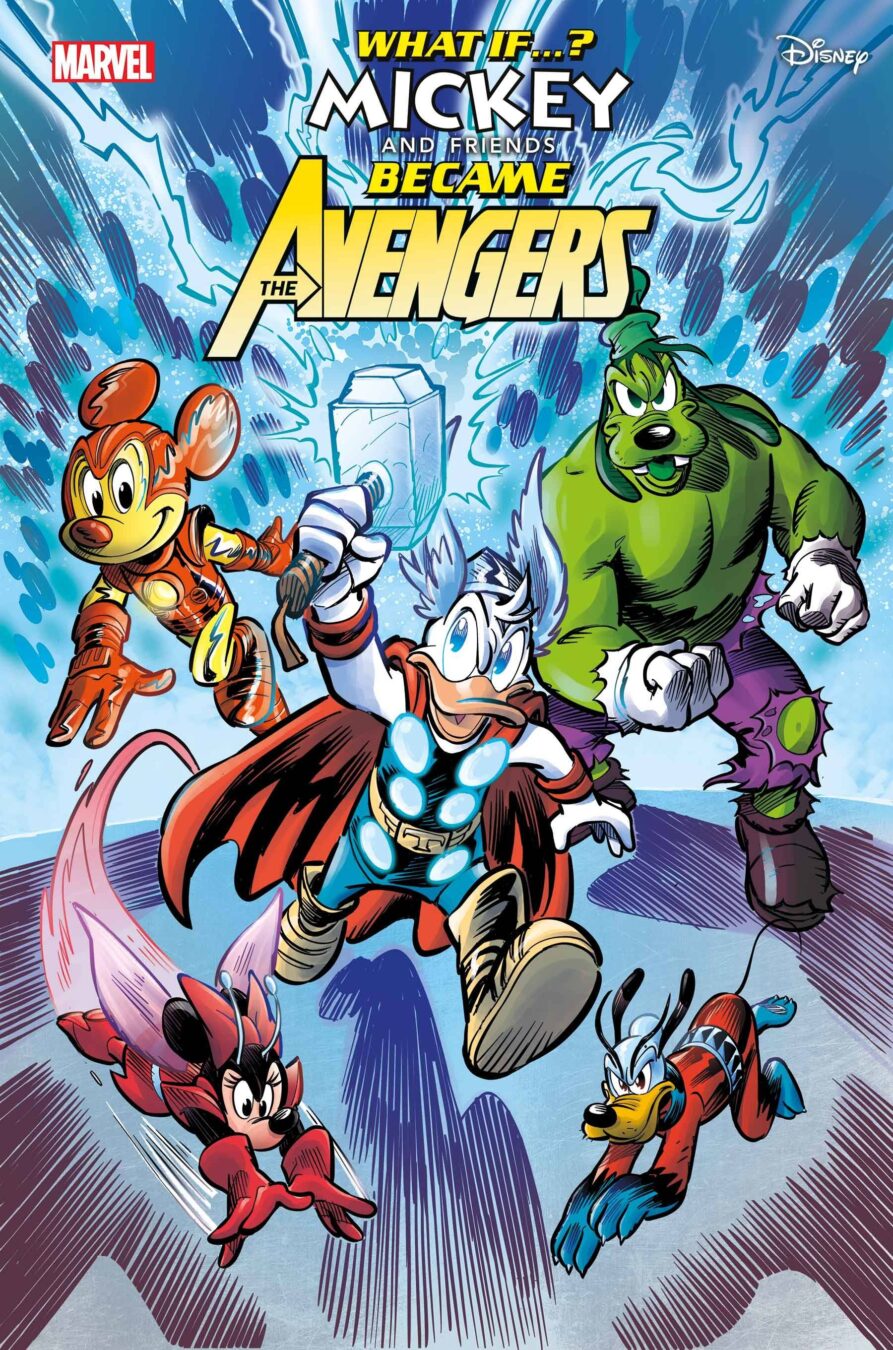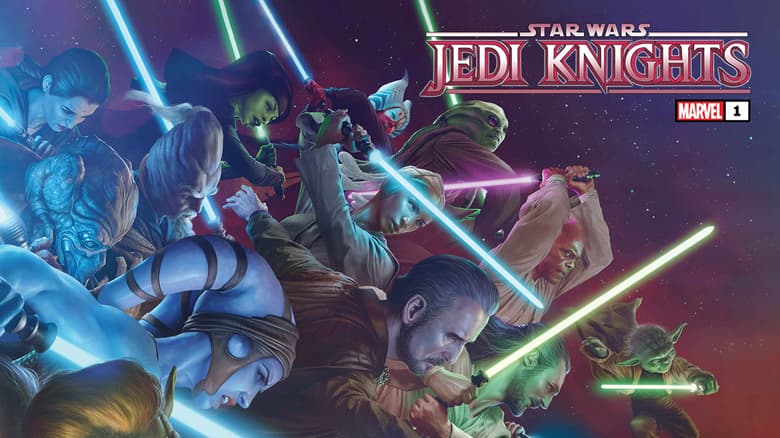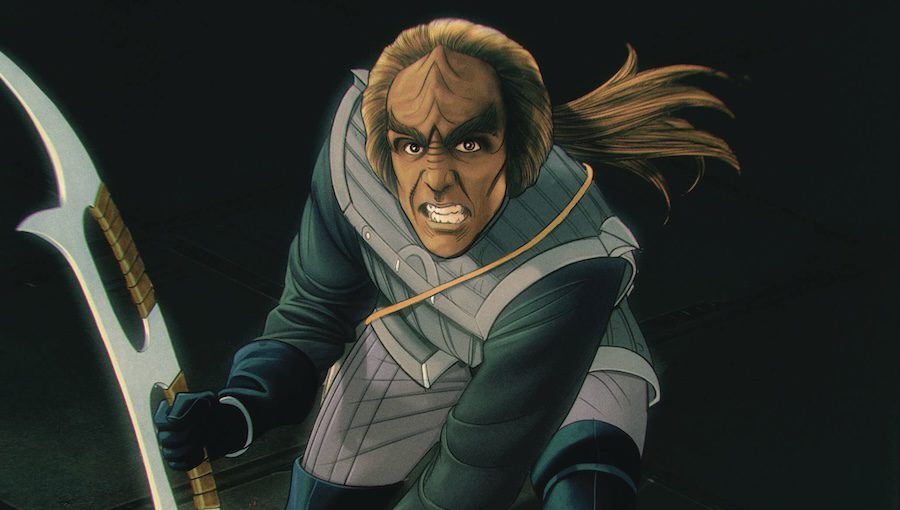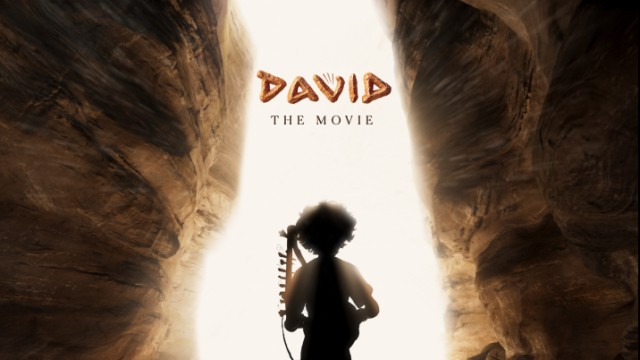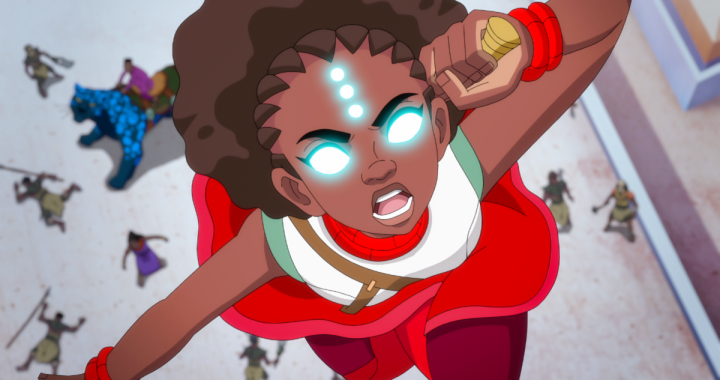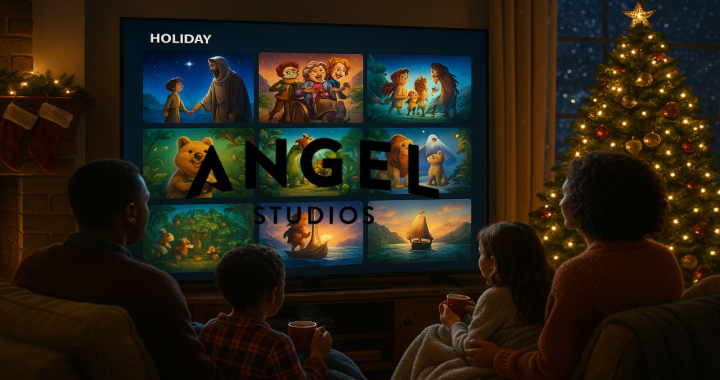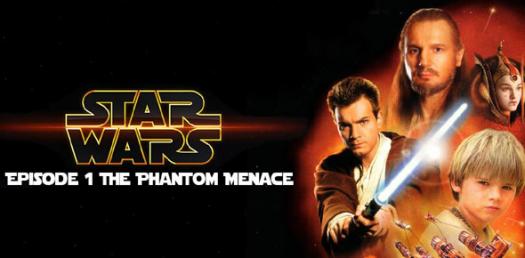
Retro Movie Review: Star Wars Episode 1–The Phantom Menace
 Nostalgia can often be forgiving. At the time of the release of The Phantom Menace it was clear that many of the elements introduced by George Lucas in Episode 1 reflected a spirit of simplicity, and at times stupidity. But time can be forgiving and the question fans contemplate as regards Episode 1 is if the elements that were so reviled can now seem charming and if the film which we all have laughed at can simply be one that we laugh with.
Nostalgia can often be forgiving. At the time of the release of The Phantom Menace it was clear that many of the elements introduced by George Lucas in Episode 1 reflected a spirit of simplicity, and at times stupidity. But time can be forgiving and the question fans contemplate as regards Episode 1 is if the elements that were so reviled can now seem charming and if the film which we all have laughed at can simply be one that we laugh with.
The film opens with the worst possible set up for conflict, a trade dispute. The villains at the outset seem like weak, predictable bullies inadvertently attacking the Galactic Order by blockading and eventually invading Naboo. The fact that Nute Gunray and his team seem like weak and ineffective villains is exactly the point. They are pawns in a game played on all sides by Darth Sidious. Throughout the film Palpatine/Sidious moves every character on the board like his own personal chess pieces. the Trade Federation is the most obvious pawn, set to instigate a conflict meant to make the Galactic Republic and Senate look weak and ineffectual.
On the way towards this conflict and the ultimate ascendancy of Palpatine as Supreme Chancellor, we follow the Jedi Obi Wan Kenobi and Qui-Gon Jinn in a series of haphazard adventures. After discovering the Trade Federation is more well armed and determined to fight than they expected, the Jedi escape and flee the Trade Federation’s Droid Army.
 Here they meet the greatest source of fan hate in the entire Star Wars Saga, Jar Jar Binks. Many fans argue faithfully that Jar Jar was unfairly left on the sidelines by Lucas, his story unfinished. But watching the film again with fresh eyes reminds us just how horrible Jar Jar is. More than being politically incorrect, Jar Jar is such a cultural satire as to be horrifying. His ultimate path to heroism is simply bumbling to go with his mumbling. This is made even more obvious as Jar Jar takes the Jedi to Otoh Gunga in the contrast to the clearly superior and far more interesting character of Boss Nass. Boss Nass is a fascinating character in retrospect, a combination of Jabba the Hutt and a practiced leader, diplomat and strategist. The fact that Boss Nass is the ultimate savior of Episode 1 makes the fact that all fans remember of the Gungans being Jar Jar even more tragic.
Here they meet the greatest source of fan hate in the entire Star Wars Saga, Jar Jar Binks. Many fans argue faithfully that Jar Jar was unfairly left on the sidelines by Lucas, his story unfinished. But watching the film again with fresh eyes reminds us just how horrible Jar Jar is. More than being politically incorrect, Jar Jar is such a cultural satire as to be horrifying. His ultimate path to heroism is simply bumbling to go with his mumbling. This is made even more obvious as Jar Jar takes the Jedi to Otoh Gunga in the contrast to the clearly superior and far more interesting character of Boss Nass. Boss Nass is a fascinating character in retrospect, a combination of Jabba the Hutt and a practiced leader, diplomat and strategist. The fact that Boss Nass is the ultimate savior of Episode 1 makes the fact that all fans remember of the Gungans being Jar Jar even more tragic.
There are truly amazing portions of Episode 1. The joy of meeting R2D2 on the escape from Naboo and are shown what makes R2 so special is only superseded by the eventual first meeting of R2D2 and C3PO. The film shifts its focus to Tatooine and the beginnings of Anakin Skywalker and the foreshadowing of his powers and darkness are a key element throughout the film. It is clear that Anakin is too powerful, too unpredictable, too much of an unknown quantity. But Qui Gon chooses to ignore all these elements and ignore all of the dark potential within  Anakin. Potential that Palpatine picks up on the second he meets the boy.
Anakin. Potential that Palpatine picks up on the second he meets the boy.
Time creates fondness of almost all of these performances. Natalie Portman plays Amidala/Padme as an incredibly intelligent, able and thoughtful young ruler who has empathy only superseded by her anger when the Jedi ignore her reservations. Pernilla August has an honest kindness about her as Anakin’s Virgin Mother Shmi Skywalker. Every line she speaks is foreshadowing to her ultimate tragic ending. Liam Neeson is a consummate Jedi, blinded by his Hope to any possibility of a dark future. And, of course, no one beats the epic performance of Ewan McGregor as Obi Wan Kenobi. Here McGregor shows a much younger and more naïve version of Obi Wan, making his future transformation into the Obi Wan with familiar gravitas of the later films even more impressive.
The greatest miscasting of the film is Jake Lloyd, rather than being an innocent slave or a thoughtful brooding child, his performance simply feels like a young child struggling through an elementary school play. Because his character is so central to the arc of these films, starting it off with such a poor performance mars this film’s place in history much more than Jar Jar could.
As the plot advances on Tatooine, the film veers into the sillier elements we often forget: The needless discussions of betting and pod-racers meant to establish in a simple way the importance of Anakin’s Jedi skills; the large amount of time spent on discussions between Watto and Qui Gon, somehow making Watto appear to be the only villain Qui Gon can defeat; The podrace itself which is the most obvious setup for a video game in the entire Skywalker Saga.
 After an all too brief battle with Darth Maul we are whisked into politics and Jedi council meetings on Coruscant. Here the true joy is in the performances of Frank Oz and Ian McDiarmid. These two performances are filled with nuance and intrigue even at this stage. Frank Oz as Yoda masterfully conveys the reservations and frustrations of a Jedi Master at the peak of his abilities but at a loss as to the enemy he faces. Ian McDiarmid pulls together the entire film playing Sidious and especially as Palpatine. McDiarmid’s amazingly manipulative Palpatine plays all sides against each other and in spite of Amidala’s unpredictable plan to return to face the Trade Federation at Naboo, is able to use the conflict to ascend to greater power on all sides.
After an all too brief battle with Darth Maul we are whisked into politics and Jedi council meetings on Coruscant. Here the true joy is in the performances of Frank Oz and Ian McDiarmid. These two performances are filled with nuance and intrigue even at this stage. Frank Oz as Yoda masterfully conveys the reservations and frustrations of a Jedi Master at the peak of his abilities but at a loss as to the enemy he faces. Ian McDiarmid pulls together the entire film playing Sidious and especially as Palpatine. McDiarmid’s amazingly manipulative Palpatine plays all sides against each other and in spite of Amidala’s unpredictable plan to return to face the Trade Federation at Naboo, is able to use the conflict to ascend to greater power on all sides.
The key portion of the final sequence on Naboo lies not in the action but in the subtler diplomacy shown by Amidala. By drawing Boss Nass to her side she is able to pull together an army strong enough to buy the more skilled fighters time to (accidently) destroy the Federation droid control ship and battle Darth Maul. The  battle with Darth Maul is the most traditional Star Wars sequence, filled with emotional frustration, lightsaber duels, a dead Jedi Master and a conveniently placed pit. These classic elements remind us what true Star Wars action is all about. It sticks to a much smaller scale as Lucas wanted to allow each Episode to feel increasingly more expansive, but does have the heart and heroics a Star Wars film demands.
battle with Darth Maul is the most traditional Star Wars sequence, filled with emotional frustration, lightsaber duels, a dead Jedi Master and a conveniently placed pit. These classic elements remind us what true Star Wars action is all about. It sticks to a much smaller scale as Lucas wanted to allow each Episode to feel increasingly more expansive, but does have the heart and heroics a Star Wars film demands.
The final closing sequences with familiar elements of a funeral and parade surround an important disagreement between Yoda and Obi Wan, with Obi Wan and the Jedi council choosing to allow Anakin’s training in spite of Yoda’s great reservations.
It’s all too easy to dismiss this film as being simplistic and juvenile. But the small, simple ways that Amidala, Obi Wan and Palpatine build their respective pieces of the larger puzzle are enough to make it interesting viewing. The action sequences and effects are well done. The performance by Jake Lloyd and character of Jar Jar Binks are unfortunately as awful as ever. But the larger epic of the Jedi and the Skywalker Saga is served well in the smaller moments throughout this film.
SCORE: 4 out of 5 Stars
Starring: Liam Neeson, Ewan McGregor, Natalie Portman, Jake Lloyd, Ian McDiarmid, Anthony Daniels, Kenny Baker, Pernilla August, Frank Oz
Director: George Lucas
Producer: Rick McCallum
Writer: George Lucas
Music: John Williams
Cinematography: David Tattersall
Production Company: Lucasfilm
Distributor: 20th Century Fox
Author Profile
- M.R. Jafri was born and raised in Niagara Falls New York and now lives with his family in Detroit Michigan. He's a talkative introvert and argumentative geek. His loves include Star Wars, Star Trek, Superheroes, Ninja Turtles, Power Rangers, Transformers, GI Joe, Films, Comics, TV Shows, Action Figures and Twizzlers.
Latest entries
 Comic BooksMarch 18, 2025Review: What If? Mickey and Friends Became Avengers #1
Comic BooksMarch 18, 2025Review: What If? Mickey and Friends Became Avengers #1 Comic BooksMarch 17, 2025Review: Star Wars Jedi Knights #1
Comic BooksMarch 17, 2025Review: Star Wars Jedi Knights #1 Comic BooksMarch 4, 2025Review: Star Wars: The Rise of Skywalker #1
Comic BooksMarch 4, 2025Review: Star Wars: The Rise of Skywalker #1 Comic BooksMarch 3, 2025Review: Star Trek Defiant #24
Comic BooksMarch 3, 2025Review: Star Trek Defiant #24
